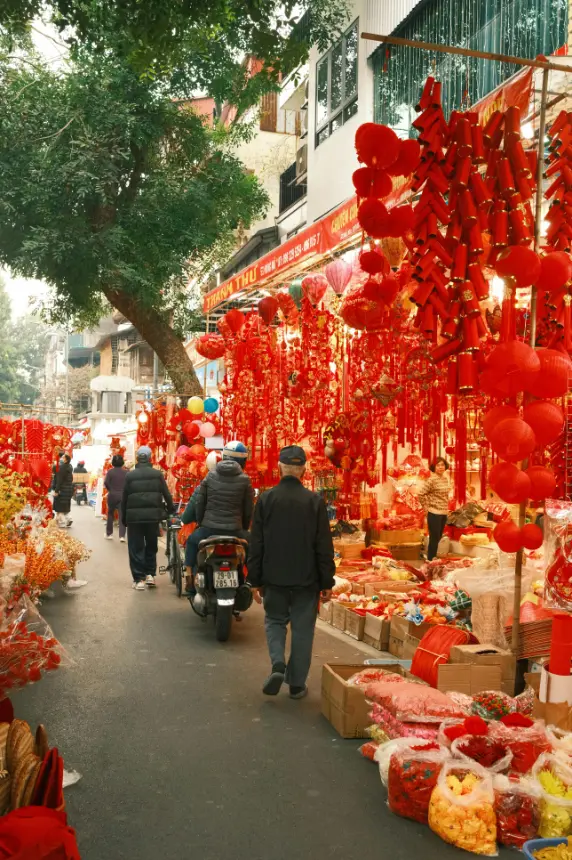Subscribe for more updates!
Stay updated with our latest design insights by entering your email below.

Where Every Prayer, Lantern, and Bite Feels Like a Slice of Home, with a Twist
If you're the kind of Indian traveler who lights a diya before takeoff and hunts for masala chai on arrival, Vietnam might just surprise you. In 2025, it’s not just a backpacker’s paradise or a noodle-fueled street food haven. It’s a place of whispers and wonder. Of ancient temples tucked behind bustling markets, full moon festivals that could rival Diwali in vibe, and flavors that feel foreign but familiar.
This isn’t the usual “temple hopping and photo stopping” kind of tour. This is Vietnam, culturally decoded for Indian hearts—where Confucian calm meets festival chaos, and vegetarian bánh mì replaces that missed Mumbai vada pav. So whether you’re a solo traveler from Pune seeking spiritual stillness or a family from Delhi wanting cultural depth without chaos, this guide’s your jam.
Let’s walk into Vietnam’s past and its pulsing present.

What it feels like: Step into a quiet garden lined with red-tiled roofs and ancient stone turtles. It’s not just a temple, it’s Vietnam’s first national university. Think Nalanda, but with incense and lotus ponds.
Why Indians love it: The reverence for teachers, the devotion to learning, the sanctity of space, it all resonates. Many Indian travelers describe it as “strangely familiar.”
Cultural tip: Dress modestly (shoulders covered), remove hats, and don’t point your feet toward altars. You know the drill.
Local Hi tip: Early morning visits are best, fewer crowds, more calm.

What it feels like: A sprawling citadel of crumbling red gates, mossy pagodas, and moats filled with lotus. This is Vietnam’s answer to India’s Jaipur or Mysore, once home to emperors, poets, and palace intrigue.
Why Indians love it: There’s something about royal ruins that speaks to our bones. The history. The drama. The Instagram angles.
Cultural crossover: Just like we revere our forts and dynasties, Vietnam holds deep pride in Hue’s Nguyen legacy. You’ll find parallels in how heritage is preserved, stories are passed down, and how emperors once ruled with astrologers by their side.
When to go: Early evening for golden light and fewer tour groups.

What it feels like: Every full moon, the electricity shuts down, the town lights up with thousands of floating lanterns, and the river becomes poetry.
Why Indians love it: Because it feels like a surreal Diwali. But instead of fireworks, there’s music. Instead of noise, there’s peace. And yes, you can make a wish and float it downstream.
Food scene: Vegetarian bánh mì, coconut pancakes, and banana-leaf-wrapped rice cakes line the lantern-lit streets.
Festival tip: Arrive a day early to avoid the rush, and stay near the Old Town for front-row seats.
Local Hi tip: Book dinner on a riverside balcony, we’ll make sure it’s vegetarian, crowd-free, and downright dreamy.

What it feels like: Like Mumbai on espresso. Fast, full-throttle, and somehow functioning. But dig deeper and you’ll find tucked-away pagodas, French architecture, and markets that smell like tamarind and basil.
Why Indians love it: Because despite the chaos, there’s order. Vegetarian food is finally catching up, thanks to the city’s growing love for wellness and Buddhism. You’ll find turmeric-infused tofu bowls, vegan pho, and iced milk tea that could rival Amul Kool.
Where to go:
Local Hi tip: We’ll pre-book vegetarian-friendly food tours, so you’re not decoding menus on Google Translate.

You don’t just visit Vietnam during Tết, you feel it. In January 2025, the entire country hit pause. The scooters slowed. The shouting softened. For a few magical days, even the busiest streets in Hanoi felt like they were exhaling.
We were there as Vietnam welcomed the Lunar New Year, and if you’ve ever spent Diwali or Holi with family, this felt strangely familiar. It wasn’t loud or flashy like a tourist festival. It was intimate. Families gathered around food-laden tables. Market stalls overflowed with marigolds and kumquat trees. At every corner, someone was lighting incense or offering fruit to ancestors. You didn’t need to understand the language; you just got it.
Tết 2025 officially began on January 29, and what followed was equal parts ritual and celebration. There were no grand parades or DJ nights, but there was something deeper: a country collectively turning the page.
The food? Surprisingly comforting. Sweet sticky rice, coconut dumplings, mung bean cakes, all vegetarian, most easily made Jain if you knew what to ask for. One LocalHi guest even said, “It reminded me of my dadi’s Sankranti sweets, just with different spices.”
We spent our days wandering through flower markets and our nights watching firecrackers from rooftops. LocalHi made sure no one felt lost, just gently guided them through it all. From temple visits to quiet ceremonies to a simple sit-down meal with a host family who didn’t speak English but offered you more than just food, they offered belonging.

We know what you're thinking: Will they understand I don’t eat garlic or fish sauce? Will I find a temple that feels sacred? Will I feel seen as a traveler, not just a tourist?
Yes, yes, and yes.
LocalHi builds Vietnam cultural journeys for Indian travelers who want something real. Think temple guides who draw parallels with Indian customs, homestays with Jain food on request, and festival tours that don’t feel like rushed field trips.
We handle the logistics, the translations, the cultural curveballs, so you can focus on awe, not anxiety.

Ready to explore temples, festivals, and food that feel like home, but with a Vietnamese twist?
Let LocalHi craft your cultural journey, woven with meaning, flavor, and heart.